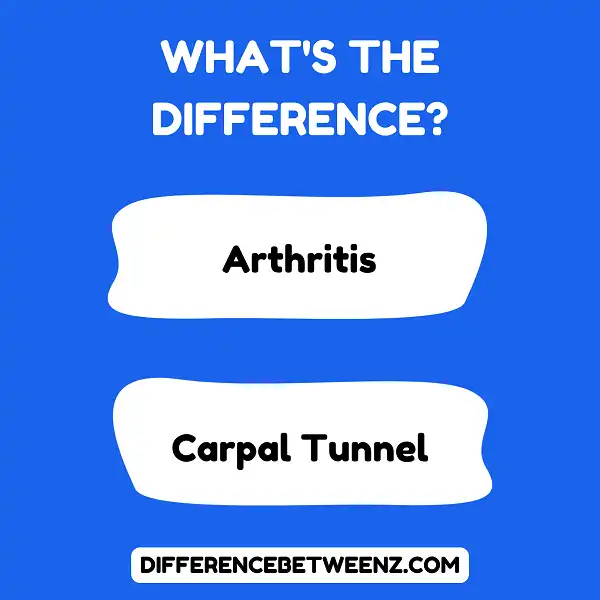Are you trying to figure out the difference between arthritis and carpal tunnel syndrome? Both conditions can be incredibly painful, causing tingling, numbness, and weakness that make it difficult to go about your day-to-day activities. Though they may share similarities in symptoms, there are a few key differences between these two medical conditions that are important to understand. In this blog post we’ll cover what exactly sets apart arthritis from carpal tunnel so that you can accurately pinpoint which health issue is affecting you or someone else close to you.
What is Arthritis?
Arthritis is a condition that causes inflammation of the joints, specifically in the hands and feet. It not only makes moving difficult, but can also cause intense pain. Arthritis is usually caused by age-related wear and tear on the joints, but there are other reasons too such as an injury or heavy strain on the joint.
Different types of Arthritis come with different symptoms and effects, so it is important to seek medical attention so that a doctor can diagnose your Arthritis and create a plan for managing it. With arthritis treatment and lifestyle modifications, many people are able to manage their Arthritis in order to live comfortably.
What is Carpal Tunnel?
- Carpal Tunnel is a fairly common condition caused by excessive stress and tension in certain nerves that travel through the wrist, called the Carpal Tunnel. Carpal Tunnel Syndrome (CTS) can cause numbness and tingling in the fingers and hand due to compression of the median nerve within the Carpal Tunnel.
- Although Carpal Tunnel Syndrome can be caused by repeated motions or positions that place stress on your hands and wrists such as using a computer for long periods of time or working assembly lines, it can also be caused by other medical conditions such as diabetes, hypothyroidism or arthritis.
- Treatment options include splints or braces to rest or keep your wrist in a neutral position, medication to reduce swelling and pain, physical therapy, steroid shots, and even surgery. With early diagnosis and treatment Carpal Tunnel can often be effectively managed so people can go back to their daily activities with minimal discomfort.
Difference between Arthritis and Carpal Tunnel
When it comes to understanding the difference between arthritis and carpal tunnel, although they both can cause pain and discomfort in your wrists, they are two different conditions.
- Arthritis is a general term used to describe joint pain caused by inflammation or stiffness of the joints, whereas carpal tunnel syndrome is a specific condition involving pressure on the median nerve as it passes through the wrist.
- Arthritis may be caused by wear and tear of the cartilage over time, while carpal tunnel often occurs because of activities such as typing that require repetitive wrist movements which place stress on this delicate area.
- Symptoms of both conditions include tingling and numbness, but if someone suspects they might have arthritis, imaging tests such as x-rays may be required.
- On the other hand, if someone suspects they might have carpal tunnel then there are special tests available to determine if this is the source of their discomfort.
Ultimately, knowing the difference between arthrits and carpal tunnel can help you take appropriate steps towards getting relief from painful wrist symptoms.
Conclusion
Arthritis is a common condition that can cause pain and inflammation in the joints. Carpal tunnel syndrome is another condition that can cause pain, numbness, and tingling in the hands and wrists. Although both conditions can cause similar symptoms, they have different causes and treatments. If you’re experiencing hand or wrist pain, it’s important to see a doctor to get an accurate diagnosis so you can receive the right treatment. Thanks for reading! We hope this article helped you understand the difference between arthritis and carpal tunnel syndrome.


